Last month, William N. Valavanis hosted the 8th US National Bonsai Exhibition in East Rochester, New York.
At the start of the event, Bill reviewed all of the exhibits and seminars he’s hosted over the years and determined that this was the 100th show he’s staged. This is impossible sounding achievement deserves massive congratulations – thank you, Bill!
This year’s event was another big success with great attendance from around the world including demonstrators Koji Hiramatsu (Japan), Gerald Rainville (Canada), Sean Smith (US), and Corin Tomlinson (UK).
The exhibit itself featured 304 bonsai. To offer an idea of what the event was like, I’ll feature a handful of trees today and next week that highlight two facets of the exhibit. This week we’ll look at exotic (non-native) trees that have been in training for many years. Next week, we’ll look at North American species at different stages of development.
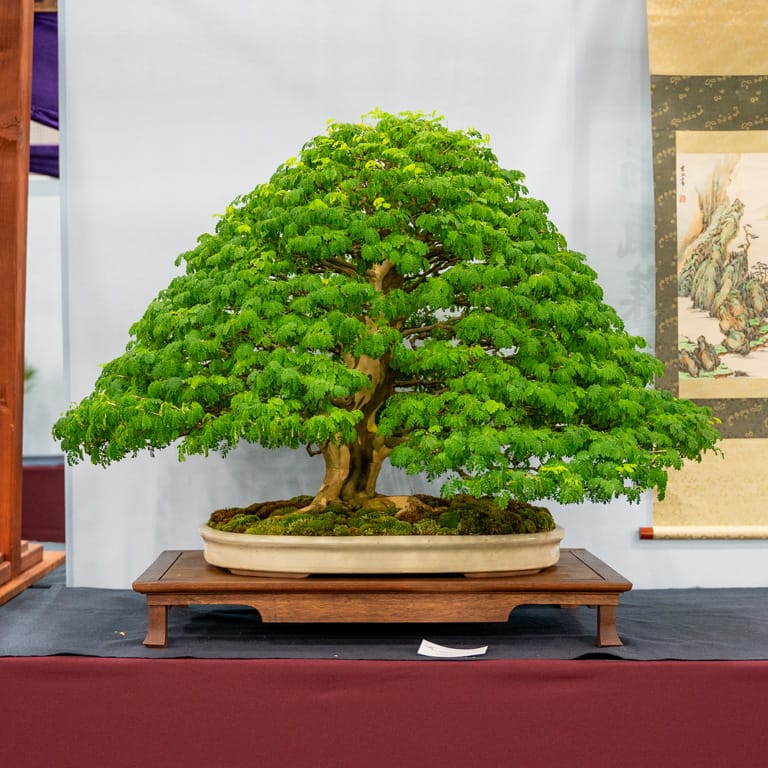
Brazilian rain tree by Louis Carreiro
One of the joys of attending an event like the US National Exhibition is that it features a great diversity of species that I don’t see as much of in regional shows. The Brazilian rain tree above is a great example of this. The tree got a lot of attention not only because it’s big and beautiful, but because it was grown from cutting in New England, a region that isn’t typically thought of as a hospitable home for tropicals!
On this note, one of the more impressive ficus in the show calls the University of Michigan’s Matthaei Botanical Garden home.
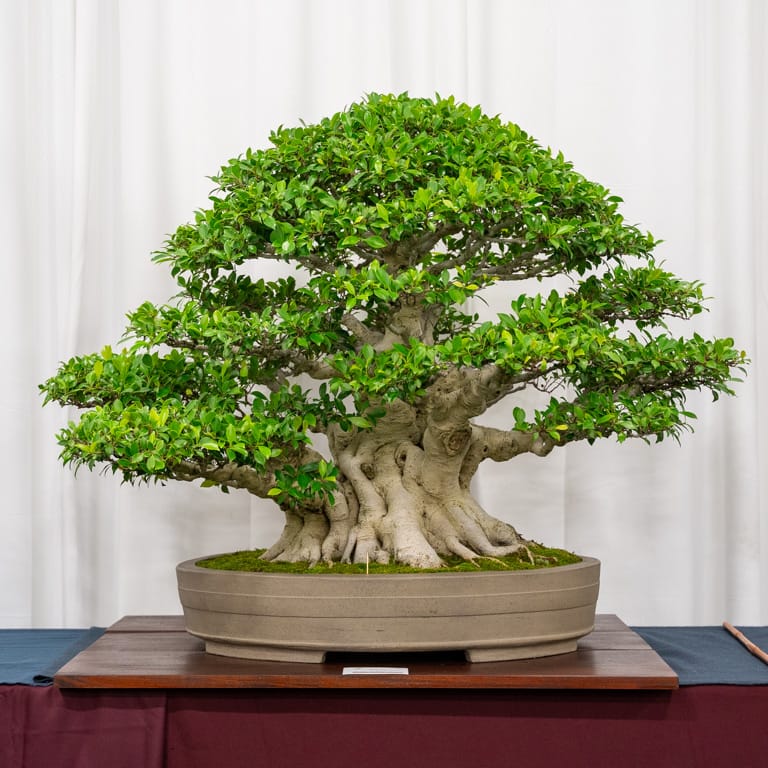
Banyan – Ficus microcarpa
One of the more dramatic trees in the exhibit was an itoigawa shimpaku by Stewart Tieszen.
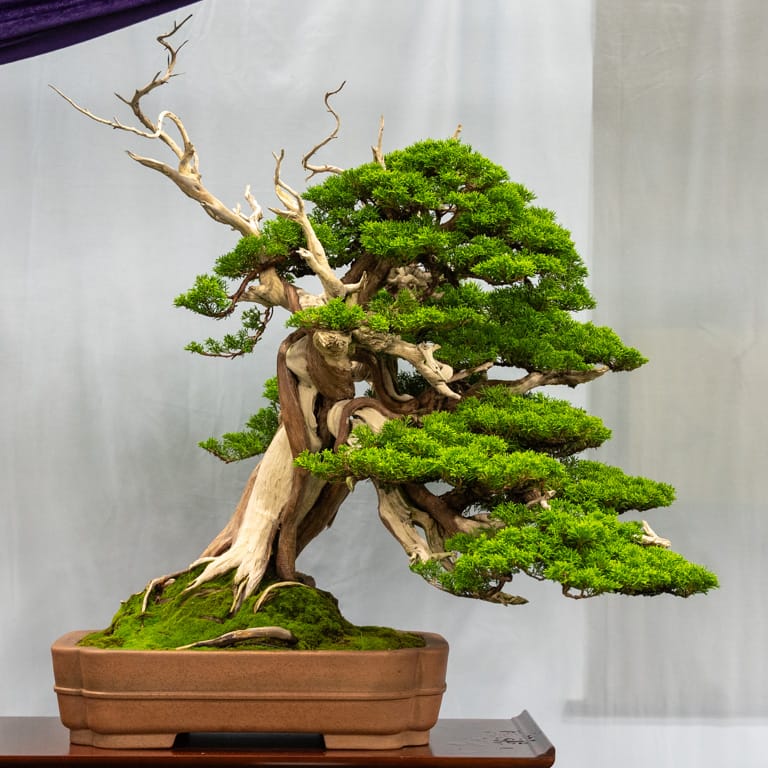
Itoigawa juniper
The tree was notable for its interesting foliage design that relied on layers of branch pads arranged in an irregular pattern. It was one of the more complex designs in the exhibit.
A mature black pine took the opposite approach by featuring a full silhouette and quiet branch design.
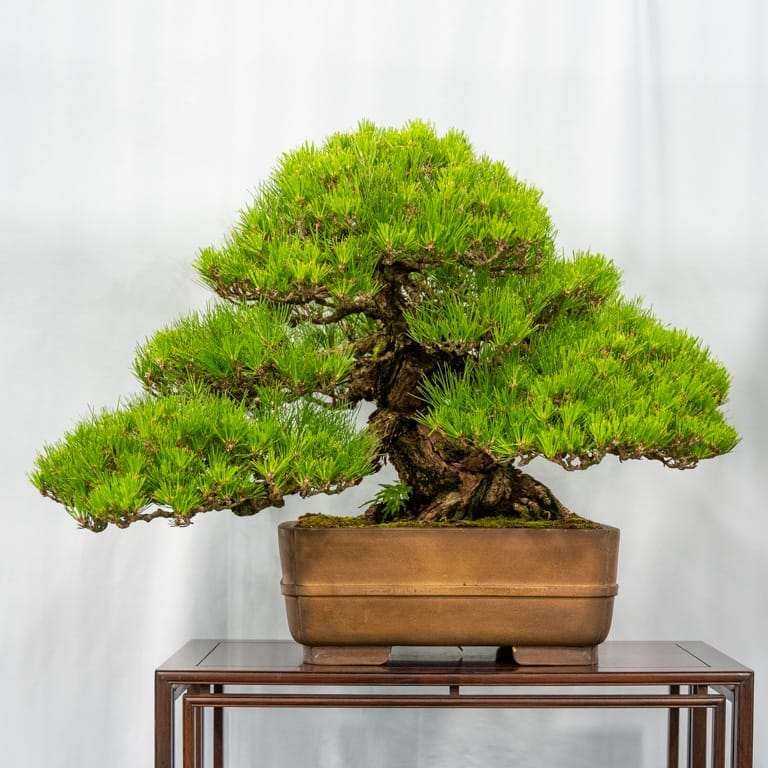
Japanese black pine by Brownlee Currey
Deciduous trees displayed in leaf often fail to convey the beauty of their branch structure, but a large cork bark Japanese maple did a great job showing off its aged bark from the base of the trunk to the uppermost branches.
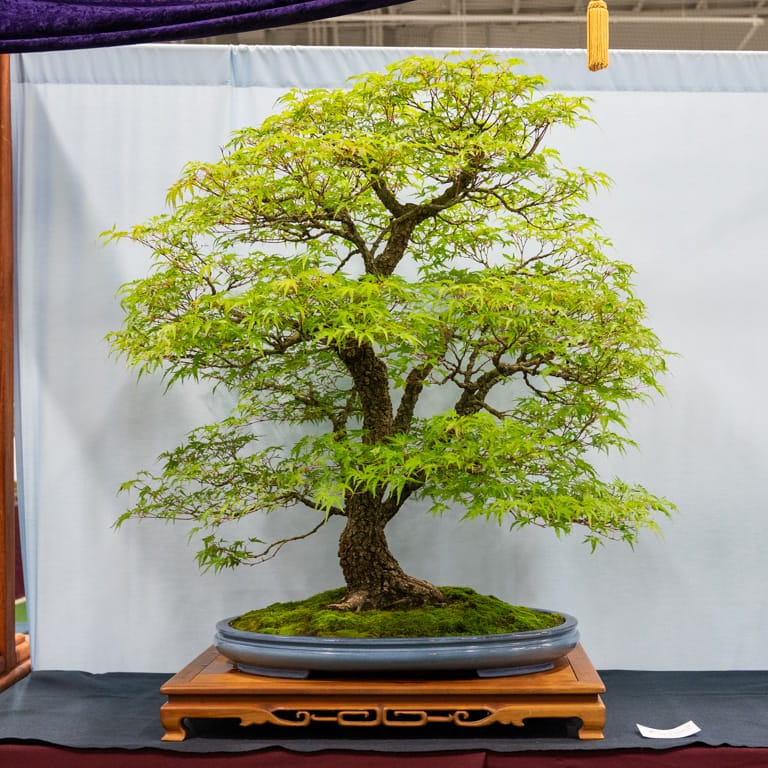
Arakawa Japanese maple by Lucas Glass
In contrast to the light and airy Arakawa maple, Mike McCallion’s trident maple conveyed strength in the lower trunk and surface roots, common features for large tridents.
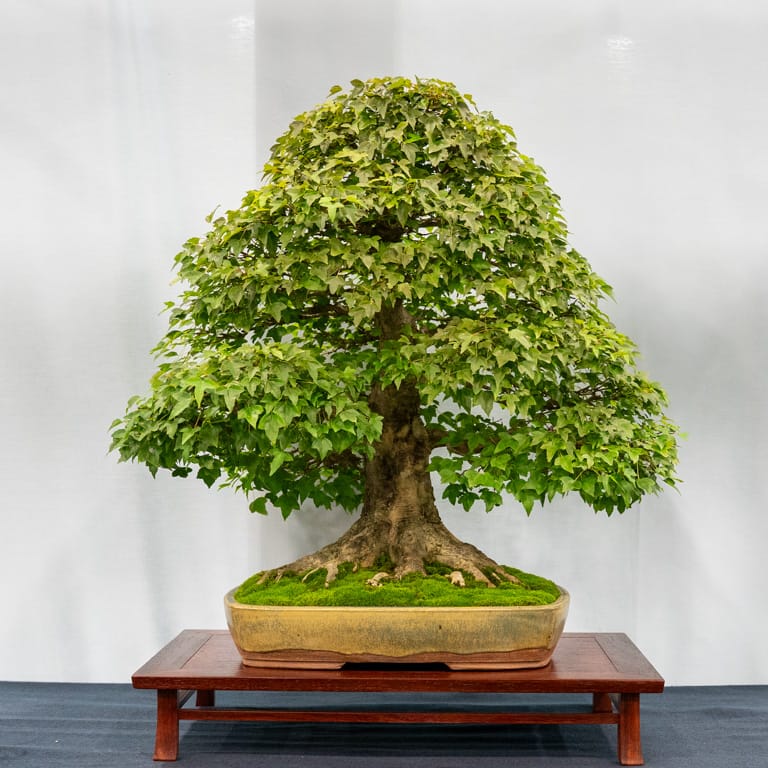
Trident maple
Our final tree for today is a multi-trunk Japanese five-needle pine. It takes great care and a gentle touch to arrange white pine branches in such a consistent and artful manner. If you haven’t had the experience, I highly recommend giving the species a try – it can be a fantastic challenge to get the branches arranged to one’s liking!
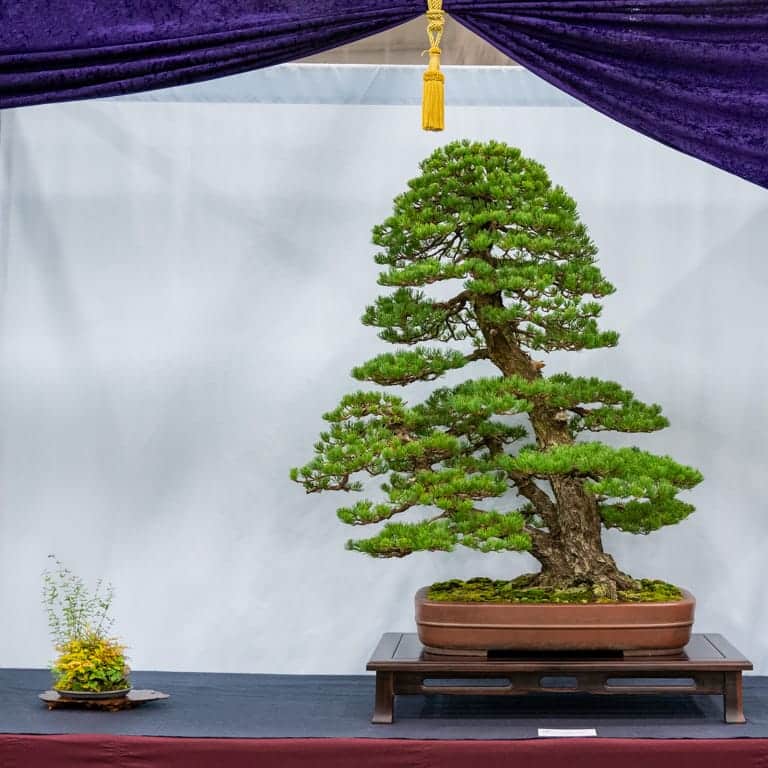
White pine by Brian Hollowell
Next week we’ll take a look at some of the US natives on display. In the meantime, head over to the Bonsai Wire Podcast to hear responses to the question, “Why should one come to the US National Bonsai Exhibition?“
East Bay Bonsai Society show this weekend
EBBS is hosting their annual show this weekend at the Lakeside Park Garden Center in Oakland, California. Come check out headliner Jason Chan of Eastern Leaf who will do a demonstration Saturday afternoon.
The show is open to the public 10am-4pm on October 7-8. Learn more about the event in the EBBS Newsletter.
